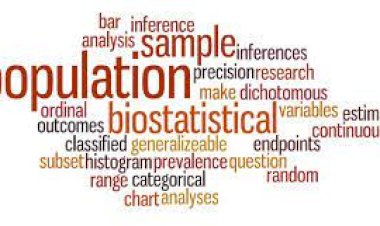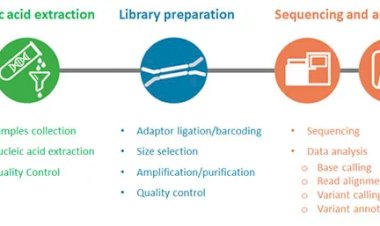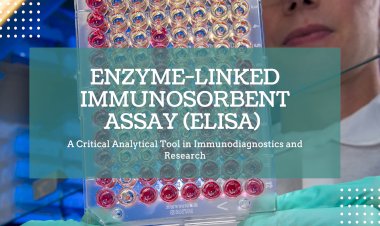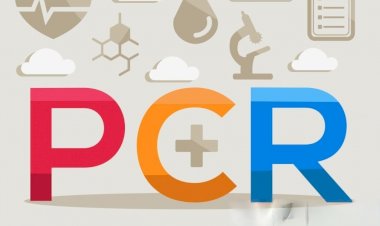IN-SILICO VACCINE DESIGNING
In silico vaccine designing is changing the landscape of immunology, enabling rapid, cost-effective, and precise vaccine development. By combining bioinformatics, structural biology, and immunology, researchers can now predict and design vaccines with greater accuracy than ever before. As we continue to face global health challenges, in silico techniques will play an increasingly important role in ensuring that new vaccines are developed faster, more safely, and more effectively—paving the way for a healthier future.

The speed and efficiency of vaccine development have never been more critical, especially in the wake of global health crises like the COVID-19 pandemic. Traditional vaccine development, often a slow and resource-intensive process, is being challenged by the rise of computational techniques, notably in silico vaccine designing. By leveraging bioinformatics, artificial intelligence (AI), and advanced computational models, in silico vaccine designing has emerged as a ground-breaking approach that accelerates the discovery of novel vaccines, all while reducing costs and enhancing precision.
What is In Silico Vaccine Designing?
In silico refers to the use of computer simulations and models to conduct experiments that would traditionally require a laboratory setting. In the case of vaccine development, this means predicting and designing potential vaccines through computational tools before any actual laboratory work begins. The term “in silico” literally means “in silicon,” referencing the silicon chips that power computers and computational processes.
Through in silico techniques, scientists analyze the genetic makeup of pathogens, predict how the immune system will respond to various antigens, and simulate how these antigens will interact with immune cells. This allows for faster identification of promising vaccine candidates and the ability to refine them virtually before proceeding to physical trials.
The Key Steps in In Silico Vaccine Designing
- Antigen Selection and Epitope Prediction
The first step in designing a vaccine in silico is identifying the right antigens—molecules from the pathogen that the immune system can recognize. Scientists use genomic and proteomic data to pinpoint these antigens. Once identified, the next step involves predicting epitopes—specific regions within these antigens that are most likely to trigger a robust immune response.
Several software tools, such as the Immune Epitope Database (IEDB), VaxiJen, and others, use algorithms to analyze pathogen data and predict which epitopes can effectively activate immune responses. These tools consider factors like B-cell and T-cell recognition, which are crucial for developing both humoral (antibody-mediated) and cellular (T-cell mediated) immunity.
- Immuno-informatics Analysis
Once potential epitopes are identified, it’s essential to predict their immunogenicity, allergenicity, and toxicity. This is done using immune-informatics tools that simulate how the immune system will respond to the selected epitopes. These analyses help ensure that the vaccine is not only effective but also safe, minimizing the risk of adverse reactions. - Vaccine Construct Design
With epitopes selected, the next step is to assemble a vaccine construct. In silico, multiple epitopes are combined into a single molecule, often using linkers and adjuvants to improve immune system recognition and enhance the vaccine’s effectiveness. Researchers simulate how this multi-epitope vaccine will perform in a host organism, optimizing its stability and solubility for production in expression systems such as bacteria (e.g., Escherichia coli) or yeast. - Molecular Docking and Dynamics Simulations
To assess the binding efficiency and stability of the vaccine construct, researchers use molecular docking techniques. These simulations model how the vaccine components bind to immune receptors like major histocompatibility complex (MHC) molecules or toll-like receptors (TLRs), which are pivotal for activating the immune system.
Molecular dynamics simulations further analyze the stability of these complexes under physiological conditions, predicting how the vaccine will behave inside a living organism. This allows researchers to identify potential issues with the vaccine’s effectiveness or stability before laboratory trials.
Advantages of In Silico Vaccine Designing
- Speed
One of the most significant advantages of in silico vaccine design is speed. Traditional vaccine development can take years, but in silico methods can shorten this timeline to just months, or even weeks, by bypassing time-consuming experimental phases. - Cost-Effective
Early-stage laboratory experiments can be costly. In silico techniques drastically reduce the need for wet lab work in the initial phases of vaccine development. This reduction in cost makes vaccine development more accessible and less financially burdensome, especially for researchers working with limited funding. - Precision
In silico tools offer highly targeted design, allowing researchers to select the most promising epitopes based on computational predictions. This targeted approach can improve the efficacy of vaccines, ensuring they are tailored to produce a specific immune response without unwanted side effects. - Safety Screening
In silico techniques enable the early identification of potential toxicities or allergenic components in vaccine candidates. By simulating how epitopes interact with the immune system, researchers can weed out problematic components before moving to in vivo testing, ensuring a safer product.
Real-World Applications
In silico vaccine designing has already proven instrumental in the fight against infectious diseases. During the COVID-19 pandemic, computational tools were crucial in quickly identifying potential vaccine targets and developing vaccine candidates at an unprecedented pace. Similarly, this approach is being applied to a variety of other diseases, including neglected tropical diseases (NTDs), antibiotic-resistant bacterial infections, and even cancer immunotherapies.
For instance, for NTDs like malaria and tuberculosis, in silico methods are accelerating the search for new vaccines by analyzing the genomes of these complex pathogens and predicting potential immune targets. Additionally, computational techniques are being used to design cancer vaccines by identifying tumor-associated antigens that could elicit a therapeutic immune response.
The Future of In Silico Vaccine Designing
The future of in silico vaccine designing looks exceptionally promising. As computational power increases and bioinformatics tools continue to advance, these methods will become more accurate, efficient, and indispensable in vaccine research. Artificial intelligence and machine learning are poised to further optimize vaccine design, helping to predict not only immune responses but also the long-term effects of vaccines.
Moreover, in silico methods could be the key to designing vaccines for diseases that have long been challenging to target, such as HIV, malaria, and other emerging viral diseases. As these tools become more refined, researchers could potentially develop vaccines for a broader range of pathogens more quickly, helping us stay one step ahead of emerging global health threats.
The Role of IBRI Noida in Vaccine Designing
The Indian Biological Scientist and Research Institute (IBRI) in Noida is a leader in applying advanced biotechnology for vaccine development. By utilizing in silico methods, IBRI accelerates the identification of potential antigens and epitopes, significantly reducing the time and cost of vaccine development. The institute combines computational predictions with laboratory validation to optimize vaccine candidates for both infectious diseases and complex challenges like cancer and antimicrobial resistance. Through collaborations with national and international research organizations, IBRI is playing a crucial role in advancing vaccine design and contributing to global health solutions.
Conclusion
In silico vaccine designing is changing the landscape of immunology, enabling rapid, cost-effective, and precise vaccine development. By combining bioinformatics, structural biology, and immunology, researchers can now predict and design vaccines with greater accuracy than ever before. As we continue to face global health challenges, in silico techniques will play an increasingly important role in ensuring that new vaccines are developed faster, more safely, and more effectively paving the way for a healthier future.































